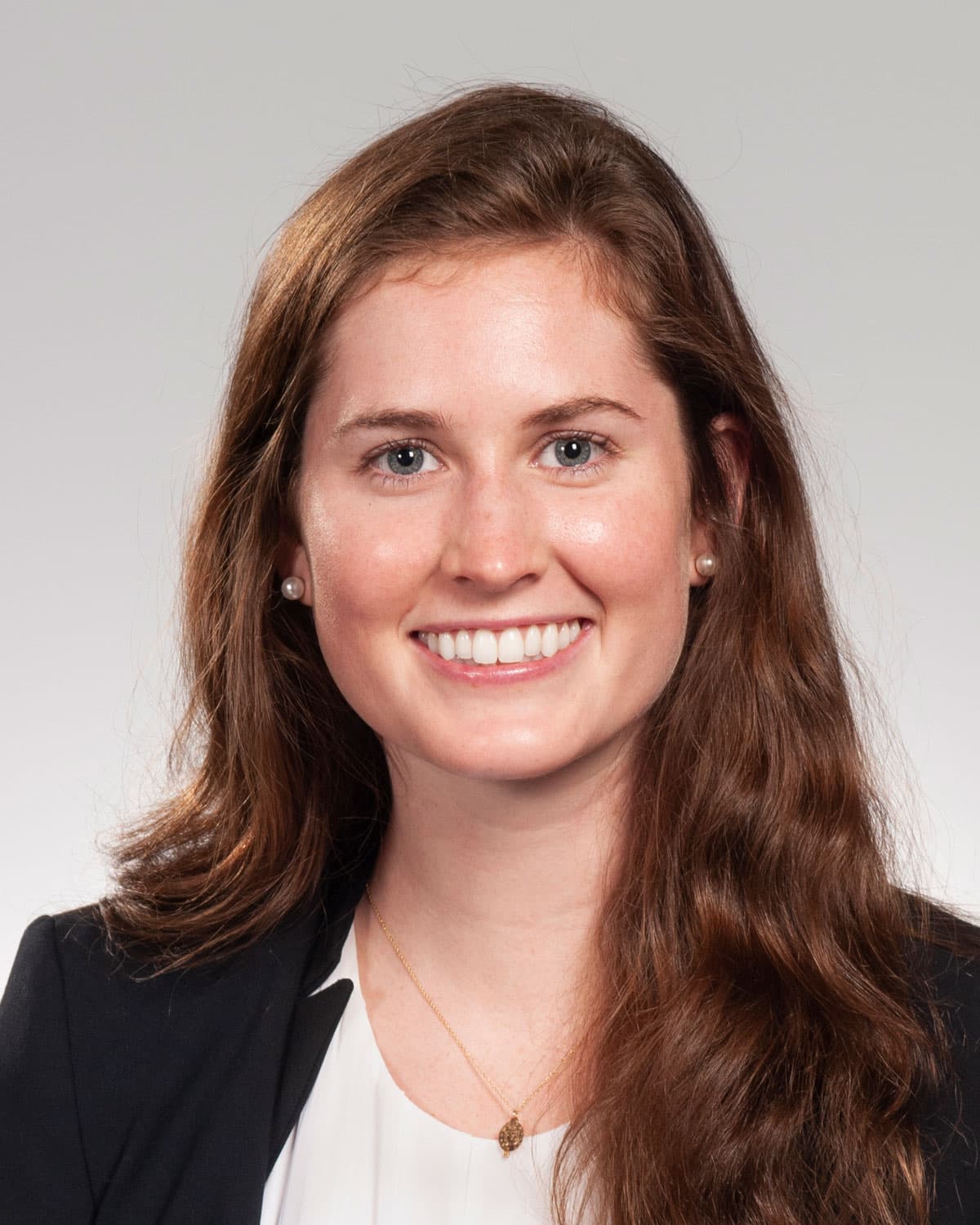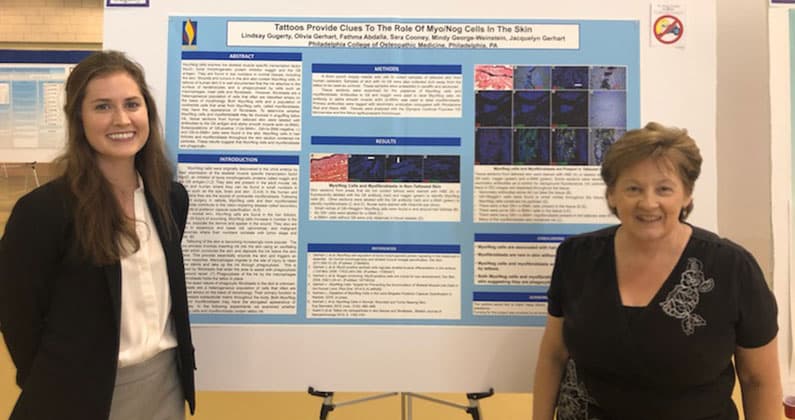Student Research Spotlight
Lindsay Gugerty (DO ’22)
June 25, 2020After receiving her bachelor of arts in biology from the University of Delaware in
2018, Lindsay Gugerty (DO ’22) began to explore options for medical school. At Philadelphia
College of Osteopathic Medicine, she found what she was hoping to find, an opportunity
to delve deeper into medicine and gain knowledge from a different perspective, beyond
what textbooks and lectures could offer. It was a fortunate meeting with Jackie Gerhart, MS, laboratory coordinator and director of the bio-imaging facility, and her close-knit team, which includes
Mindy George-Weinstein, PhD, chief research and science officer and Arturo Bravo-Nuevo, PhD, associate professor, neuroscience, that inspired Lindsay to become involved in research
in areas that were new to her.
 What are you studying?
What are you studying?
Since my time at PCOM I have explored the emerging roles of Myo/Nog cells in wound
healing. These powerful and mystifying cells were discovered at PCOM by Dr. Mindy
George-Weinstein and Jackie Gerhart. Myo/Nog cells are critical for normal embryonic
development because catastrophic deformities of the heart, central nervous system,
eyes and skeletal muscle occur in their absence.
Myo/Nog cells also are present in normal and diseased tissues of the adult, including
tumors. Upon injury, they migrate to wounds and develop into contractile cells called
myofibroblasts. While myofibroblasts are beneficial for wound closure in some tissues,
our research has shown that they may be problematic under certain circumstances. For
example, after cataract surgery in the lens, myofibroblasts derived from Myo/Nog cells
contract and produce wrinkles that impair vision. This disease is called posterior
capsule opacification or secondary cataract. I also helped to identify Myo/Nog cells
in membranes that form on the surface of the retina in a condition called proliferative
vitreoretinopathy. Contractions of these membranes may cause retinal detachment and
blindness.
Our recent work revealed another important property of Myo/Nog cells, that is, an
ability to ingest or phagocytose foreign material and dead cells in the skin and eyes.
Clearance of this material is important to prevent chronic inflammation and autoimmune
disease. While Myo/Nog cells also appear to be phagocytic in malignant melanoma tumors,
their roles in cancer are still under investigation by the team.
What experience do you have conducting research?
During my undergraduate years, I completed clinical research in the emergency department
at Christiana Hospital, a level-one trauma center located in Newark, Delaware. There
were several research projects I was involved in regarding common maladies seen in
the emergency department, namely sepsis, stroke and trauma. We assessed the efficacy
of new and emerging techniques and equipment physicians employed in a variety of these
settings.

In her time at PCOM, Lindsay Gugerty (DO ’22) has explored the emerging roles of Myo/Nog
cells in wound healing.
What were your responsibilities in your research projects at PCOM?
My role primarily involved identifying and quantifying Myo/Nog cells in the lens,
retina and skin, and determining whether they formed myofibroblasts and engaged in
phagocytosis. One technique I used was immunofluorescence staining, which involves
labeling tissues with antibodies that recognize proteins specifically synthesized
in Myo/Nog cells. The specificity of the labeling technique for Myo/Nog cells was
validated by co-localizing multiple proteins in the same cells. Aside from proving
they are present in the tissues and increase in number in response to injury, we need
to understand the conditions that stimulate their differentiation into myofibroblasts
and engulfment of cell corpses and foreign material.
What is the broader impact of your research?
The surface has only been scratched regarding the potential of Myo/Nog cells. We are
just now beginning to understand the myriad capabilities and scenarios in which they
play a part. Hopefully as we continue to learn about these cells, their various functions
can be harnessed for specific therapeutic purposes, namely to enhance wound healing,
prevent vision threatening eye diseases and slow the growth of tumors. It is a gradual
process of unveiling new clues and piecing them together. I am very excited to see
what the future holds!
About Philadelphia College of Osteopathic Medicine
Established in 1899, Philadelphia College of Osteopathic Medicine (PCOM) has trained
thousands of highly competent, caring physicians, health practitioners and behavioral
scientists who practice a “whole person” approach to care—treating people, not just
symptoms. PCOM, a private, not-for-profit accredited institution of higher education,
operates three campuses (PCOM, PCOM Georgia and PCOM South Georgia) and offers doctoral degrees in clinical psychology, educational psychology, osteopathic
medicine, pharmacy, physical therapy, and school psychology. The college also offers
graduate degrees in applied behavior analysis, applied positive psychology, biomedical
sciences, forensic medicine, medical laboratory science, mental health counseling,
physician assistant studies, and school psychology. PCOM students learn the importance
of health promotion, research, education and service to the community. Through its
community-based Healthcare Centers, PCOM provides care to medically underserved populations.
For more information, visit pcom.edu or call 215-871-6100.
Contact Us
For general media inquiries, please contact the Office of Marketing and Communications
at 215-871-6300 or communications@pcom.edu. Visit our media relations page to view contact information for public relations personnel.
Connect with PCOM

 What are you studying?
What are you studying?
